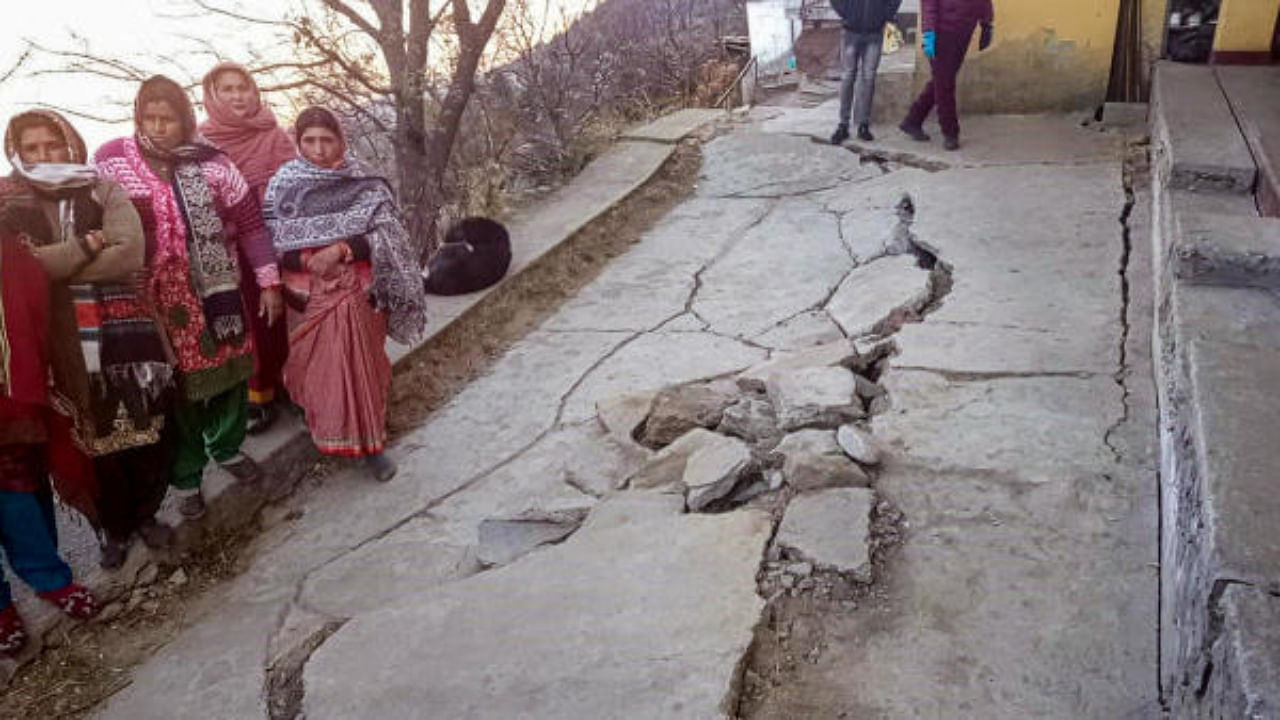
The sinking of Uttarakhand’s Joshimath town and the cracks developing in its homes, roads and fields have made the town unsafe for living, and there is panic among its inhabitants. A number of families have been evacuated and many others are waiting for their turn. The temple town is a gateway to key pilgrimage sites and a trekking point. It is strategically important, being close to the China border. The panic situation did not come upon the town suddenly. It has been foretold for decades. Scientists and geologists have for long warned against heavy constructions in the area. The 1976 Mishra Commission had recommended a ban on such constructions. But the warnings were not heeded. Rampant construction continued and gained pace. The national highway was widened and electricity projects, including the 520-mw Tapovan project, with its 2.5-km long underground tunnel, came up.
Joshimath, and the entire region around it, have vulnerable foundations as they are on the foothills of the Himalayas, the world’s youngest and most fragile mountain range. Unregulated construction was allowed in the area. Constructions were done on the fragile mountain terrain and slopes, which blocked the natural flow of water. It was the big constructions like the hydroelectric projects and the Char Dham highway that may have stressed the earth beyond tolerance levels. Environmentalists’ concerns over such assaults on nature were not taken seriously, even by the judiciary. A geotechnical survey ordered by the state government some months ago had warned that the foundations of the town were not stable as it was built on landslide material. There were floods, torrential rainfall, and many landslides in recent years. The area from Chamoli to Joshimath has been particularly hit by disasters.
Efforts are now being made to save the town and the people. The Prime Minister’s Office (PMO) has taken the initiative. The people in the danger zone and in other vulnerable areas will have to be evacuated immediately. Saving the town itself will be a big challenge. It is still unclear whether it will be fit for habitation. There are demands to assess the rock strength, seismic micro-zonation, replanning of its drainage system and rainwater outlets, and for shelving the power project. The town is also prone to tectonic activity. Joshimath is a warning. There are lessons to be learnt from it even for other areas in the country. It may be recalled that the Modi government had pushed ahead with the Char Dham highway project, which may perhaps have proved to be the proverbial last straw that broke the camel’s back, and environmentalists who had raised concerns about it were labelled as obstructionists and anti-nationals. The government will do well to pause and rethink its idea of development.